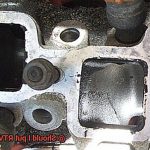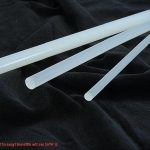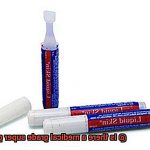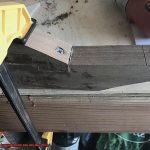Are you a craft fanatic who can’t stand waiting for glue to dry? We feel your pain, and guess what? We’ve got some mind-blowing news. In this blog post, we’re diving into the captivating world of Elmer’s glue to explore ways to make it dry faster.
Elmer’s glue has been the holy grail of adhesives for ages, known for its versatility and unbeatable bonding power. But let’s be real, waiting for it to dry can feel like an eternity, especially when you’re in a hurry. So, is there a magical trick to speed up this process? Stick around as we reveal some fascinating methods that might just save you precious crafting time.
Join us on this experimental journey where we’ll test out various techniques, from natural remedies to everyday household items. We’ll uncover how factors like temperature, humidity, and airflow can impact drying speed. And get ready for some surprising hacks that could have you wielding your glue gun way sooner than ever before.
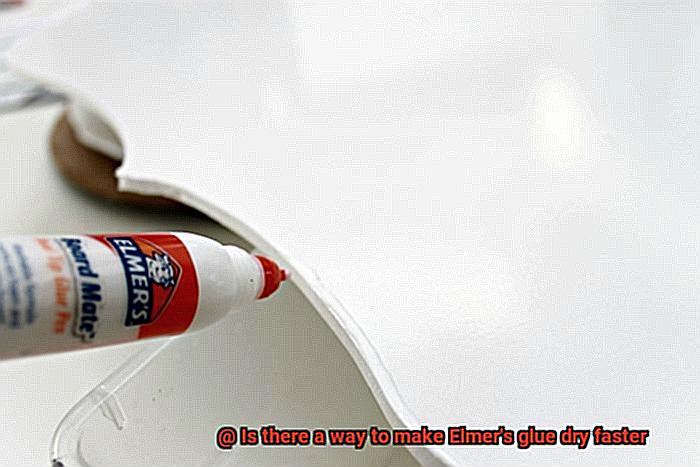
Crafting and creativity should never be held back by slow-drying glue. If you’re eager to shave off those precious minutes from your projects, stay tuned for our ultimate guide on making Elmer’s glue dry faster. Let’s unlock the full potential of Elmer’s glue and make your crafting adventures speedy and oh-so-satisfying.
Elmer’s Glue
Contents
- 1 Elmer’s Glue
- 2 Increasing the Temperature to Make Elmer’s Glue Dry Faster
- 3 Using Fans or Hairdryers to Speed Up the Drying Process
- 4 Reducing Humidity to Aid in Drying Time
- 5 Adding Additives for Quicker Drying
- 6 Applying Thin Layers of Glue
- 7 Tips and Tricks for Making Elmer’s Glue Dry Faster
- 8 Potential Adverse Effects of Speeding Up the Drying Process
- 9 Conclusion
Elmer’s Glue is a versatile adhesive that is widely used for arts and crafts projects and general household repairs. It offers various formulations, each designed for specific applications. Let’s take a closer look at the different types of Elmer’s Glue:
- White glue: Also known as PVA glue, this is the most commonly used type of Elmer’s Glue. It is perfect for bonding porous materials like paper, fabric, wood, and cardboard. With its thick consistency, white glue is easy to control and apply. It dries clear and flexible, making it suitable for a wide range of projects.
- Clear glue: If transparency is important for your project, clear glue is the way to go. It is ideal for crafts that require a see-through finish, like making slime. Clear glue has similar properties to white glue but dries with a more transparent result.
- School glue: Elmer’s also offers a variant specifically formulated for children’s use. School glue is non-toxic and washable, ensuring the safety of young crafters. It has a thinner consistency compared to white and clear glues, allowing for smoother application. Plus, it dries quickly and remains flexible after drying.
One of the great features of Elmer’s Glue is its water-based formula. This means it can be easily cleaned up with water while still wet, making it convenient for accidental spills or adjustments during crafting. However, once dry, Elmer’s Glue forms a strong bond that is resistant to moisture.
In addition to its adhesive properties, Elmer’s Glue can also be used as a sealant or primer. Applying it to porous surfaces before painting helps prevent uneven absorption of paint and enhances the durability of the finished product.
Increasing the Temperature to Make Elmer’s Glue Dry Faster
Increasing the temperature has a powerful impact on how quickly Elmer’s Glue dries. Here’s why:
- Accelerated evaporation: When the temperature rises, the water molecules in the glue become more energetic and start moving at a faster pace. This increased movement allows the water molecules to escape from the glue at a quicker rate, resulting in faster drying times.
- Finding the right balance: While heating the glue can speed up drying, it’s crucial to strike a balance between drying speed and maintaining a strong bond. Excessive heat can cause the glue to cure too quickly, which may result in a weaker bond. Therefore, it’s important to monitor the temperature carefully and ensure it stays within safe limits.
Methods for increasing temperature and speeding up drying:
- Blast of hot air: Using a hairdryer or heat gun is an effective way to direct hot air onto the glued surface, significantly accelerating the drying process. However, it’s important to maintain a safe distance between the nozzle and the glue to avoid overheating or scorching.
- Warm environment: Placing the glued object in an environment with elevated temperatures can also expedite drying. This can be achieved by using a heating pad, setting a warm oven at a low temperature, or simply leaving it under direct sunlight (if applicable). Close monitoring of the temperature is essential to prevent damage or safety hazards.
- Dehumidifier aid: Combining increased temperature with a dehumidifier can help reduce moisture content in the air, facilitating faster evaporation of water from the glue.
Safety considerations:
- Follow manufacturer instructions: Some glues may have specific temperature requirements or limitations set by the manufacturer. It’s essential to read and adhere to the instructions provided with the glue.
- Exercise caution: When using heat or high temperatures to expedite drying, safety should be a top priority. Maintain safe distances, closely monitor temperatures, and follow proper guidelines to prevent accidents or damage to the glued object.
Using Fans or Hairdryers to Speed Up the Drying Process
Fans and hairdryers are commonly used to speed up the drying process of various substances, including Elmer’s glue. These tools can be beneficial when time is limited, but it’s important to consider the advantages, risks, and safety concerns associated with each method.
Fans are a popular choice for drying glue because they generate airflow that helps evaporate the water content in the glue, promoting faster drying. They are easy to use and readily available in most households. To ensure sufficient airflow without disturbing the glue, it is recommended to place the fan at a distance from the glued object and set it to a medium or high speed. One advantage of using a fan is that it doesn’t involve heat, reducing the risk of compromising the glue’s integrity. However, it’s crucial to secure the glued object properly to prevent any splattering or smearing caused by the movement of air.
Hairdryers can also expedite the drying process by blowing warm air onto the glue. Setting the hairdryer to its lowest heat setting and holding it a few inches away from the glue allows for controlled drying. Moving the hairdryer back and forth over the glued area distributes the warm air evenly, facilitating faster drying. One advantage of using a hairdryer is that it provides more targeted heat compared to a fan. However, excessive heat can make the glue brittle or compromise its adhesive properties. To avoid this issue, it’s essential to use a low heat setting or cool air.
When using fans or hairdryers near wet glue, safety precautions should be taken. It’s crucial to secure the glued object properly to prevent accidental splattering or smearing caused by the airflow. Additionally, caution should be exercised when using any heat source, as excessive heat can damage the glue or pose a fire hazard.
While fans and hairdryers can assist in expediting the drying process, it’s important to allow sufficient time for the glue to fully dry and cure. The drying time for Elmer’s glue typically ranges from 24 hours to several days, depending on factors such as humidity and thickness of the glue application. For those seeking faster drying, using specialized quick-drying glues or accelerators specifically formulated for Elmer’s glue may be more effective.
Reducing Humidity to Aid in Drying Time
Reducing humidity is a key factor in expediting the drying time of Elmer’s glue. When the air is saturated with moisture, it hampers the evaporation process, causing the glue to dry at a sluggish pace. However, by employing specific techniques to combat humidity, you can accelerate the drying time of Elmer’s glue and make your projects come together more quickly.
One highly effective method to combat humidity is by utilizing a dehumidifier. This ingenious device works tirelessly to extract excess moisture from the air, thereby lowering the overall humidity level in a room. By strategically placing a dehumidifier near the area where the glue is drying, you create an environment with reduced humidity, allowing the glue to dry at a rapid rate.
In addition to dehumidifiers, air conditioning and fans are invaluable allies in your battle against humidity. These devices promote air movement and circulation, which play a vital role in the evaporation process. By switching on the air conditioning or setting up fans to create a gentle breeze, you can effectively decrease humidity levels around the glue, resulting in significantly faster drying time.
Proper ventilation is also crucial when it comes to reducing humidity and expediting drying time. Opening windows or doors allows fresh air to infiltrate the room, facilitating the removal of excess moisture and improving airflow. This exchange of indoor and outdoor air not only lowers humidity levels but also enhances the overall drying process of Elmer’s glue.
Selecting an appropriate location for drying is another aspect to consider. Avoid areas with high moisture content, such as basements or bathrooms, as they tend to have higher humidity levels. Instead, opt for well-ventilated areas with lower humidity levels like living rooms or bedrooms. These spaces provide an optimal environment for quicker drying.
Furthermore, it is essential to take weather conditions into account. If possible, choose a day with lower humidity levels or wait for a period when the weather is less humid before embarking on your gluing endeavors. Weather forecasts or online sources can provide valuable information on humidity levels, enabling you to plan accordingly and ensure a more efficient drying process.
Adding Additives for Quicker Drying
Adding additives for quicker drying is a technique that can be used to reduce the drying time of Elmer’s glue. By introducing certain substances into the glue, you can effectively decrease the moisture content and accelerate the drying process. This can be particularly useful in situations where time is of the essence or when you need to complete a project quickly.
One popular additive that can be utilized is baking soda. Known for its moisture-absorbing properties, baking soda can help to absorb excess moisture from the glue, resulting in faster drying. To incorporate baking soda, simply sprinkle a small amount into the glue and mix it thoroughly. The absorption capabilities of baking soda will aid in speeding up the drying process.
Another option for reducing drying time is to add salt to the glue. Salt acts as a drying agent and aids in absorbing moisture, thereby decreasing the overall drying time of the glue. Similarly, sprinkle a small amount of salt into the glue and ensure thorough mixing to achieve optimal results.
Alcohol can also be employed as an additive to expedite drying. Due to its rapid evaporation rate, alcohol effectively removes moisture from the glue, resulting in quicker drying times. However, it is important to exercise caution as adding alcohol may impact the adhesive properties and bonding strength of the glue. To use alcohol as an additive, it is advisable to use small amounts and carefully monitor its effects.
Cornstarch or baby powder are alternative additives that possess moisture-absorbing properties, making them suitable for reducing drying time. These powders can be sprinkled into the glue and mixed thoroughly to ensure even distribution and faster drying.
When incorporating additives into Elmer’s glue, it is essential to start with small amounts and experiment with different ratios to achieve desired outcomes. Adding excessive amounts of additives can potentially alter the adhesive properties of the glue or cause undesired thickness or clumps.
Furthermore, thorough mixing of the additives with the glue is crucial to ensure even distribution. This will guarantee that the drying time is reduced uniformly throughout the entire application of the glue, resulting in a more efficient and effective drying process.
Applying Thin Layers of Glue
To master the art of using Elmer’s glue, one must understand the importance of applying thin layers. In this article, we will delve into the significance of thin glue layers, exploring their advantages and disadvantages. Additionally, we will provide you with an array of practical tips to ensure effective application.
Why Thin Layers Matter:
Thicker layers of glue languish in drying time due to excessive moisture content. Conversely, thin layers expedite drying as they contain less moisture. Consequently, the thickness of the layer directly impacts drying time, making it paramount to apply thin and even coatings of glue.
Advantages of Thin Layers:
- Faster Drying Time: Thin layers facilitate swifter evaporation, resulting in shorter drying periods. This advantage proves invaluable for time-sensitive projects or when immediate handling is required.
- Stronger Bond: By employing thin layers, the glue establishes optimal contact with the surfaces being bonded, maximizing adhesion and fortifying material connections.
- Reduced Clumping or Smudging: Even drying is a hallmark of thin layers, minimizing the risk of clumping or smudging that can occur when working with thicker applications.
Tips for Application:
- Brush or Spatula: Embrace the elegance of precise application by forsaking direct bottle squeezing. Instead, use a brush or spatula to apply a thin layer, granting you superior control over the amount of glue applied.
- Clean and Dry Tools: Prior to dipping your brush into the glue reservoir, ensure its cleanliness and dryness. The introduction of moisture can contaminate the glue, adversely affecting drying time.
- Apply Evenly and Smoothly: Employ gentle strokes to spread the glue evenly in a thin layer. Excessive pressure or force may cause excess glue to escape, resulting in an undesirably thick coating.
- Consider the Surface: Porous surfaces have a penchant for absorbing moisture, thereby slowing the drying process. In such cases, apply a thin layer, allow it to partially dry, and then apply another thin layer on top to expedite drying.
- Partial Drying for Bonding: When joining surfaces, apply a thin layer of glue to both sides and permit partial drying before pressing them together. This practice ensures optimal adhesion and hastens drying.
- Environmental Factors: Take into account temperature and humidity levels, as they significantly influence drying time. Warmer temperatures and lower humidity levels typically yield faster drying times.
- Proper Ventilation: After applying the glue, promote swift moisture evaporation by ensuring adequate ventilation in the workspace. Employ fans or open windows when necessary.
Tips and Tricks for Making Elmer’s Glue Dry Faster
One trick for making Elmer’s glue dry faster is to increase air circulation around the glued area. This can be done by using a fan or opening windows to let in fresh air. The movement of air helps to evaporate the moisture in the glue, which speeds up the drying process. You can also place the glued item near a fan to direct air flow towards it, helping the glue dry more quickly.
Another tip is to apply heat to the glued surface. You can use a hairdryer set on low heat to blow warm air onto the glue. The heat helps to speed up evaporation, allowing the glue to dry faster. However, be careful not to use too much heat, as it can cause the glue to bubble or become brittle. Keep the hairdryer at a safe distance from the glue and move it around continuously to prevent overheating.
Using a thinner layer of glue can also help it dry faster. Thicker layers of glue take longer to dry because there is more moisture inside that needs to evaporate. By applying a thin layer of glue, you reduce the amount of moisture and allow it to dry more quickly. Make sure to spread the glue evenly and avoid applying too much at once.
Mixing Elmer’s glue with other ingredients can also speed up drying time. Some people have found success by adding a small amount of baking soda or salt to the glue. These additives help absorb moisture and promote faster evaporation. However, make sure to test these mixtures on a small, inconspicuous area before using them on a larger scale, as they may affect the properties of the glue.
Lastly, make sure to choose an optimal environment for drying Elmer’s glue. It dries best at temperatures between 70°F and 90°F (21°C
32°C) with a humidity level of around 50%. Extreme temperatures or high humidity can impede the drying process, so select a suitable location for gluing and drying projects.
Potential Adverse Effects of Speeding Up the Drying Process
- Reduced Bond Strength: When glue is allowed to dry naturally, it forms strong bonds between surfaces. But if the drying process is accelerated, the adhesive may not have enough time to fully penetrate and bond with the materials. This can result in weaker adhesion and an increased likelihood of separation or breaking.
- Increased Brittle Nature: Speeding up the drying process can make the glue more brittle. Glue contains water as a solvent, and when it dries naturally, the water evaporates slowly, allowing the glue to cure properly. But if the drying process is hastened, the water content may evaporate too quickly, resulting in a more brittle glue film. Brittle glue is prone to cracking and breaking under stress.
- Uneven Drying: Speeding up the drying process can also lead to uneven drying of the glue. When glue dries naturally, it dries uniformly, ensuring a consistent bond throughout. But if the drying process is accelerated, certain areas may dry faster than others, leading to an uneven distribution of adhesive strength. This can result in weak spots in the bond and increase the risk of failure or detachment.
- Potential Damage to Materials: Some materials may be sensitive to heat or other external factors used to speed up drying. This can lead to discoloration, warping, or even melting of materials. It’s important to consider the compatibility of both the glue and the materials being bonded when attempting to expedite the drying process.
- Safety Concerns: When using methods like applying heat or increasing airflow to speed up drying, there is a risk of injury or fire hazard. It’s essential to follow proper safety precautions and manufacturer’s instructions to minimize these risks. Additionally, certain expedited drying methods may release harmful fumes or emit volatile organic compounds (VOCs), which can be detrimental to health if inhaled. It’s crucial to work in a well-ventilated area and take necessary precautions when attempting to speed up the drying process.
Conclusion
Yes, there are several ways to speed up the drying time of Elmer’s glue.
One method is to increase air circulation by using a fan or opening windows. This allows the moisture in the glue to evaporate more quickly.
Another option is to apply heat to the glued surface using a hairdryer or heat gun on low settings. The warmth helps accelerate the drying process.
However, it’s important to note that these methods may affect the strength and durability of the glue bond, so use them with caution and test on a small area first.


